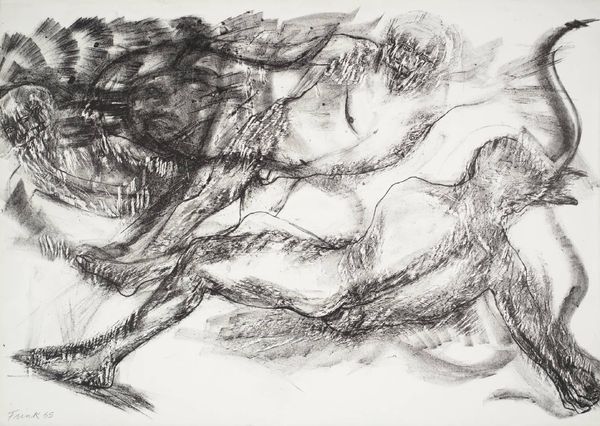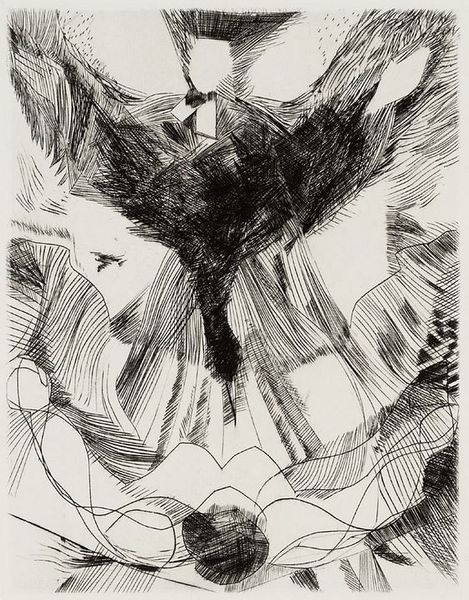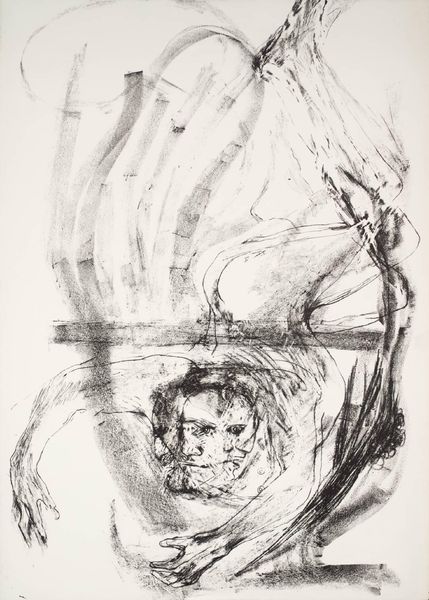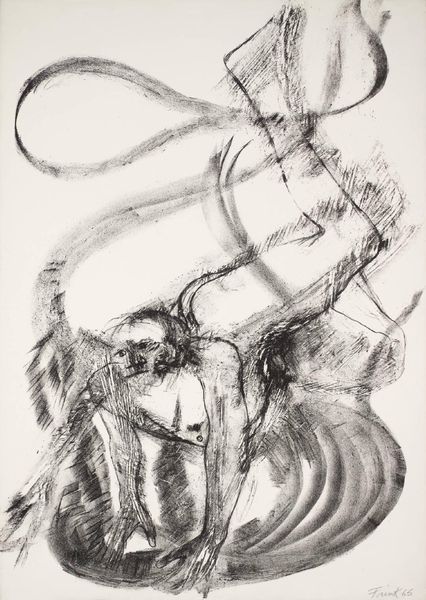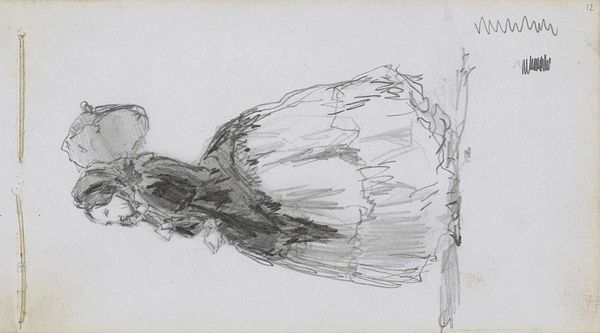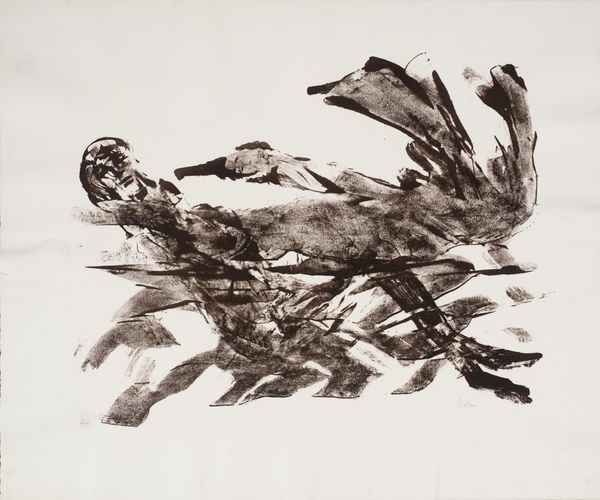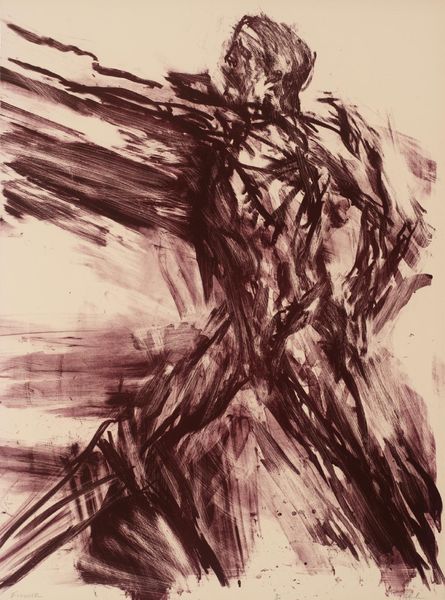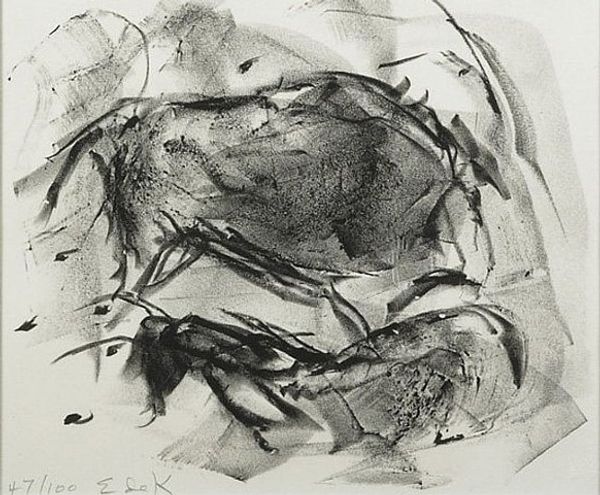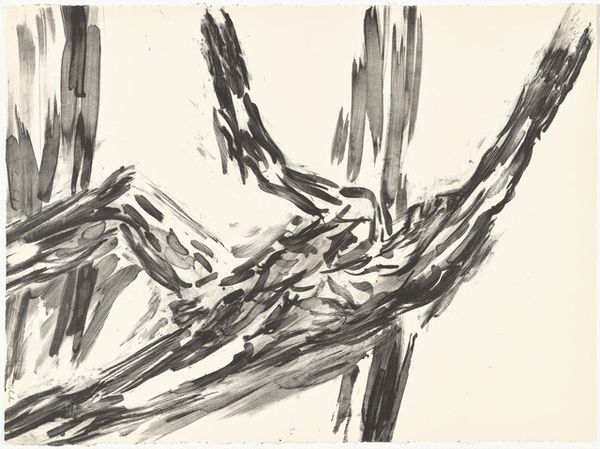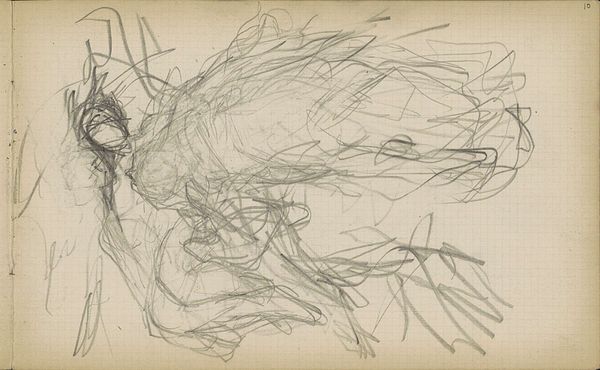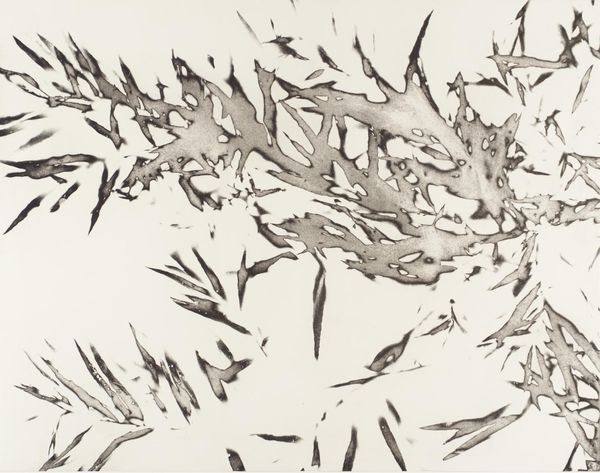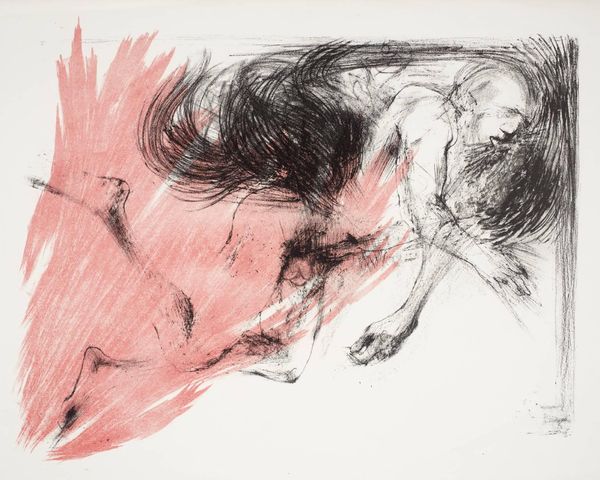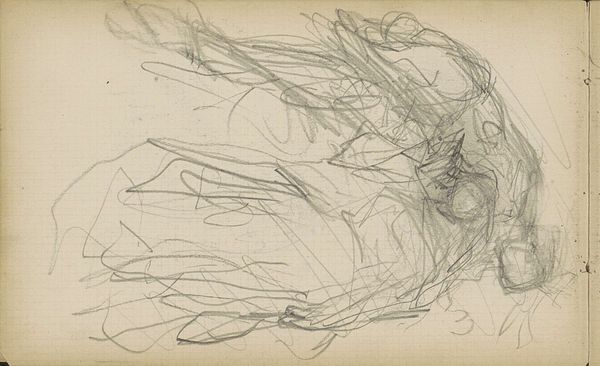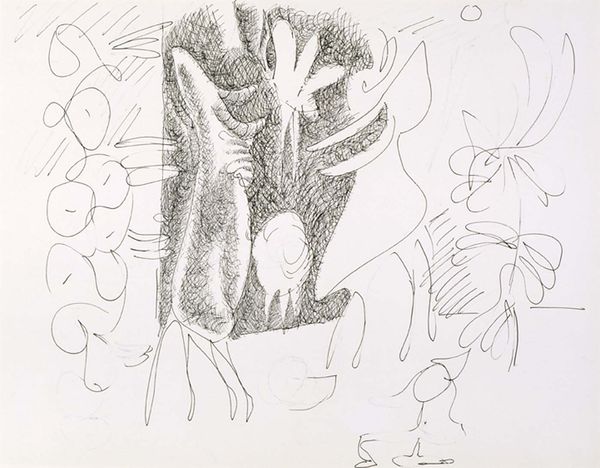
Dimensions: image: 571 x 803 mm
Copyright: © Frink Estate | CC-BY-NC-ND 4.0 DEED, Photo: Tate
Curator: Oh, my heart lurches a bit when I look at this. It feels like witnessing a caged spirit trying to break free. Editor: Well, that kinetic charge comes from the charcoal, I think. Dame Elisabeth Frink really wrestled with that medium. It’s all about the push and pull of the hand against the paper to capture this form in flux. Curator: Absolutely. It's "Spinning Man VIII," currently in the Tate collections. There's a raw, almost violent energy to it, wouldn’t you say? Editor: I agree. And it’s not just expressionistic mark-making; the paper itself becomes a site of struggle. It mirrors the post-war anxiety, where materials had to speak of scarcity, labor, and also the potential for repurposing. Curator: Yes, that tension between vulnerability and strength. Frink’s recurring motifs of the male form are so fascinating. Editor: Indeed. Considering the cultural moment—one rebuilding from ruins, the raw expressiveness of charcoal served as its own statement. A statement echoing Frink’s material choices, which made the artistic act as poignant as the final image. Curator: It makes one wonder what stories lie beneath those frantic lines, doesn't it? Editor: Yes. I find myself pondering the economic implications of charcoal production. What does it mean to create art from burnt wood, what kind of labor is involved in that medium?
